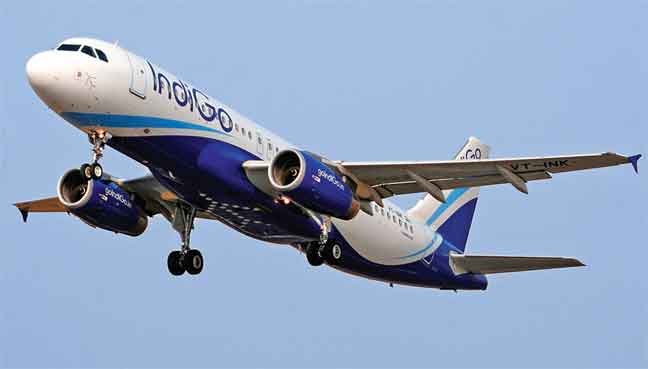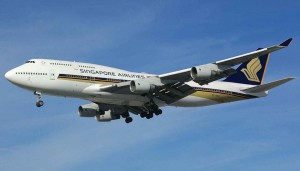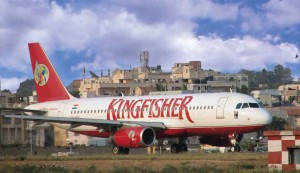Civil aviation in India may be taken as a study in contrasts. Despite extraordinary growth in traffic, most of India’s airlines are in a precarious condition. Despite forecasts that India will add more than a thousand transport aircraft to civil fleets in the two next decades, India has too few airports and today lacks the aviation safety infrastructure required to handle the growth.
Indian carriers operate with some of the highest fuel costs in the world…
India has experienced extraordinary growth in civil aviation over the past decade and is forecast to be one of the world’s largest aviation markets in just a few years. To achieve and afford the promise of civil aviation, India faces challenges posed by national and state policies, law, regulation and practice. Crucial questions are presented to policy makers, regulators, business leaders and legal advisers.
Civil aviation in India may be taken as a study in contrasts. Despite extraordinary growth in traffic, most of India’s airlines are in a precarious condition. Despite forecasts that India will add more than a thousand transport aircraft to its civil fleet in the two next decades, India has too few airports and today lacks the aviation safety infrastructure required to handle the growth.
India’s Airline Industry
A 2012 KPMG report cited a 15.6 per cent increase in the Compound Annual Growth Rate (CAGR) in domestic passenger throughput over the five-year period concluding in FY 2011. KPMG also forecast domestic throughput of 293 million passengers by FY 2020, up from 106 million (actual) in FY 2011 and 51 million (actual) in FY 2006. Late in 2012, the International Air Transport Association (IATA) predicted that India’s domestic air traffic would experience double-digit growth between 2012 and 2016. For air cargo, India was forecast by IATA to be among the five fastest growing international freight markets.
The Indian domestic air travel market is clearly sensitive to pricing…
For a variety of reasons, however, growth has slowed. IATA reported that domestic air traffic had dropped 9.1 per cent in February 2013 versus February 2012. The growth rate of India’s Gross Domestic Product (GDP) has eased and disposable incomes have been pressured by inflation and the declining value of the rupee. Airline costs have been rising in part because of the reduced currency valuation, very high charges for aviation fuel levied by Government Public Sector Undertakings (PSUs) and high sales taxes imposed by state governments. A recent report asserts that the overall cost of airline operations increased by 20 per cent in just three months in 2013 because of jet fuel prices and rupee devaluation. The Indian domestic air travel market is clearly sensitive to pricing. Some of the growth in air travel has been fueled by a ‘middle class’ willing and financially able to fly. There also may be price elasticity given the availability of travel by rail, as India enjoys one of the world’s largest rail networks.
Irrespective of the recent dip, Boeing’s 2013 commercial aviation forecast covering the period 2013 to 2032, estimates that Asia Pacific airlines will need 12,820 new airplanes valued at $1.9 trillion over the next 20 years. Late in 2012, Boeing forecast that India would have the highest passenger traffic growth in the world, higher than China’s and predicted the Indian market would require 1,450 new aircraft worth $175 billion by 2031.
But the Boeing forecast also cautions that India is one of the several regions where “aviation growth outpaces planned infrastructure development.”
Most of the civil air carriers in India are in financial distress…
Today, most of the civil air carriers in India are in financial distress. According to one report, India’s leading airlines posted a combined loss of $1.65 billion between 2012 and 2013. The government-owned carrier, Air India, has a total debt of approximately $6.4 billion and is expected to post a net loss of nearly $625 million in the current financial year. Just a few years ago, exploding demand brought several new, low-cost carriers to the Indian market, leading to the purchase or lease of several dozen modern single-aisle airliners. Taken as a whole, the financial results are discouraging. Only one Indian carrier, IndiGo, is expected to be profitable in 2013. Several of the budget carriers Kingfisher, Paramount and MDLR have ceased operations.
At the same time, however, interest remains keen among prospective entrants to join the Indian market, especially in the wake of Government decisions allowing increased investment by foreign airlines in Indian carriers. The Tata Group has announced its return to civil aviation. Through a link-up with AirAsia, a new budget carrier, AirAsia India, is expected to start flying domestic routes in January 2014. The Tata Group also has announced an intention to partner with Singapore Airlines (SIA) to create a new, full-service airline, Tata SIA Airlines Limited with Tata Sons as the majority partner with a 51 per cent stake. These developments reflect confidence on the part of the airline industry that there is as-yet unmet demand for air traffic to be served to and from and within India.
Air carriers face other challenges in the web of national and state regulation and taxation. Indian carriers operate with some of the highest fuel costs in the world. India imports a huge percentage of Aviation Turbine Fuel (ATF) from foreign sources and prices are set by Government-owned PSUs that exclude competition from private sources. State surcharge on fuel vary widely, from four to 30 per cent, and are not under effective control of the Central Government. Further pressure is a consequence of the fall in the value of the rupee relative to the dollar. According to some estimates, as much as 70 per cent of the costs of airline operations in India are dollar-based.
Liberalizing FDI in all sectors of civil aviation should encourage greater inflow of capital…
The negative movement of the rupee may prove transitory. The Central Government is aware of the financial difficulties of the airline industry and may show forbearance from new charges and efforts to mitigate existing levies. Also, there are some signs of restraint on the part of state governments. Five states reportedly have agreed to reduce their taxes to as low as four per cent. Bengal recently announced a three-year sales tax waiver on ATF at some of the airports as an incentive to operators.
Apart from the distressed financial condition of most of India’s carriers and the availability of cheap rail transport, another constraint on the growth of passenger and cargo traffic is the relatively small size of the aircraft fleet available for domestic routes or international destinations. One source reports that the total fleet size for commercial airlines in India was 371 as of February 2013. In recent years, India has seen a dramatic increase in the number of airliners operated by domestic carriers and more are on order. Nonetheless, actual capacity compares unfavorably with other countries in South Asia whose domestic airlines own many more aircraft to serve smaller populations. Indonesia, with a population of 240 million, about 20 per cent that of India’s, has a substantially larger fleet in being and many more aircraft on order.
Role of the Government
The not yet resolved status of Kingfisher aircraft affects the ability of Indian carriers to lease aircraft or obtain financing for purchase. India in 2008 ratified the so-called ‘Cape Town Agreement’ (formally, the ‘Convention on International Interests in Mobile Equipment’ adopted in Cape Town in South Africa in 2001). The Cape Town Agreement is intended to assure financiers that they will have prompt ability to repossess collateral such as airplanes, in the event of financial default. Kingfisher Airlines, which leased Airbus A320 aircraft from several lessors, suspended operations in 2012. Several lessors have encountered stiff legal and bureaucratic obstacles in recovering the airplanes, in part because of demands by local airport and tax authorities for payments Kingfisher failed to make. As a consequence of Kingfisher’s default and the obstacles encountered by aircraft lessors, the financiers now are demanding a premium from the hard-pressed Indian carriers to cover added risks. However, all but two of the controverted airplanes have been recovered as of this writing. The Government of India reportedly has agreed to consider legislative and regulatory changes to expedite the ability of lessors to re-possess aircraft. Until the Government completes these actions, problems exemplified by Kingfisher will constrain the financing of aircraft fleet growth.
Infrastructure remains a continuing challenge and potentially is the critical restraint upon the growth of India’s civil aviation…
At the level of the Central Government, India sometimes has exhibited an ambivalent and contradictory attitude towards civil aviation. Periodically, the Government has acted to increase charges upon carriers and passengers as a revenue-generating device. But in May 2013, Civil Aviation Minister Ajit Singh said that the Government is looking to reduce charges to land and park planes at 80 smaller Indian airports. The Government is also re-examining a long-standing rule that Indian carriers are prohibited from flying internationally unless they have five years of domestic operations and a minimum of 20 aircraft.
For some time, the Central Government has pledged to take necessary steps to replace the Director General of Civil Aviation (DGCA) criticized as lacking in authority and resources, with a new and more powerful central aviation administration, the Civil Aviation Authority (CAA). CAA would have independent funding and improve upon recruitment and retention of trained aviation personnel. Though the Union Cabinet has approved the proposal to replace the DGCA with the CAA, and the commercial aviation community has expressed widespread support for this change, it will take several years to occur. However, the DGCA has taken several positive steps recently. Most important is the decision to extend by one year the term of Arun Mishra, the head of the DGCA and also its plans to hire 100 airworthiness officers to improve its staffing of safety oversight.
Air Safety
Problems with DGCA figure into new concerns that raised by international authorities about India’s attention to air safety. Late in the summer of 2013, a delegation from the International Civil Aviation Organization (ICAO) conducted fact-finding in India and its scrutiny was followed by an audit by the US Federal Aviation Administration. It is expected that these reviews will pressurize India to shore up its aviation oversight, answer shortages of trained aviation specialists and improve supervision of aircraft repairs. There are indications that the Government is responding promptly. If its efforts are not sufficient, then India’s status among countries in the aviation schema could be downgraded and there would be restrictions on the ability of Indian carriers to add flights to international destinations. This would be harmful especially to Air India, which has announced intentions to use its growing fleet of Boeing 787 passenger aircraft on new international routes.
Various DGCA actions impose frustrating operational and regulatory barriers…
Foreign Direct Investment
India’s approach to foreign investment in its domestic carriers also has exhibited ambivalence, uncertainty and inconsistency. In 2012, the Indian Government announced that it would relax limits on Foreign Direct Investment (FDI) in Indian carriers, allowing a new maximum of 49 per cent. Realization of the benefits of the change has been beset by competing bureaucracies and frustrating delays. Early in April 2013, UAE-based Etihad Airlines announced its intention to buy a 24 per cent stake in Jet Airways. The subsequent processing of that investment has been tortuous, with allegations of impropriety as well as various interventions by multiple government agencies and bureaus, among them the Prime Minister’s Office, the Central Vigilance Commission (CVC), the Securities and Exchange Board of India (SEBI), the Foreign Investment Promotion Board (FIPB), the Department of Industrial Policy & Promotion (DIPP), the Competition Commission of India (CCI) and the Cabinet Committee on Economic Affairs (CCEA). All have been involved in the route to approval and many have intervened to impose changes to the commercial deal. However, it appears that this deal will be concluded in the near future and the lessons learned should be instructive. Despite the travails of the Etihad-Jet Airways deal, the recently announced plans for AirAsia India and Tata-SIA Airlines suggest that the Government’s FDI policy changes are working to bring foreign airline capital to India’s carriers.
There are many analysts who advocate further relaxation of FDI limits on civil aviation. There are several sectors encompassed within civil aviation – among them domestic airlines, ground handling, setting up new airports and non-scheduled operations – that have different FDI limits. India, like many sovereign nations, naturally has a strong desire to assure that its nationals have an active role, if not controlling authority, in these vital commerce sectors.
Due recognition of these national interests is India’s right, of course. However, India’s present experience is one where the pace of foreign investments has fallen and where the current account deficit has risen, together contributing to the decline in the value of the rupee. Liberalizing FDI in all sectors of civil aviation should encourage greater inflow of capital and could help India to increase carrier fleets, improve carrier operations and profitability and enhance infrastructure. Stronger air carriers should bring in more competition for domestic and international travel.









Its a very sad condition. Aviation industry in India is at a very bad phase. Problems lie with inadequate political and regulatory agency’s (DGCA) will to change the policies in INDIA.
Thousands of students who have done Aircraft maintenance Engineering (AME) course in India are unable to find jobs, and eventually end up choosing something else as profession. Even if they get a job they are paid peanuts in comparison to other industry jobs. Worst of all, AME Course is not even considered as a degree by the DGCA, hence they cant even pursue higher studies in other fields. This is the same condition with other aviation related jobs like Quality control and management, operations and even with pilots. There are thousands of pilots without jobs in India and are forced to take up some other profession after spending lakhs of rupees on their education.
DGCA at most times draft air policies just in line with FAA or other regulatory authority standards. Sometimes it appears as if its a Copy Paste Job. We need policies that suits Indian conditions. There should be greater transparency in policy formulation, implementation and monitoring. Above all there is a need to make regulators accountable and responsible to ensure that their actions are directed only at the growth of the aviation sector.
There should be greater collaboration and understanding between various ministries ( Petroleum, Civil Aviation, Home, Finance, HRD) in drafting and implementing Aviation rules and regulations. Every effort should be made to boost the airlines’ business by addressing issues relating to regulations, infrastructure, Capital financing and Human resource development.
Air operators too must work with greater co ordination and must not engage in cut throat competition. There should be greater consensus with respect to route sharing and pooling of other resources, they must work hand in hand with regulators (DGCA, RBI ) in meeting requirements and ensure the growth of the sector.